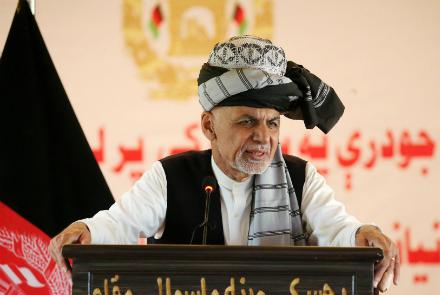 A classified document seen by TOLOnews reveals that the Afghan government has drafted a guide for the future peace effort titled “The 7-Point Peace and Reconciliation Plan.”
A classified document seen by TOLOnews reveals that the Afghan government has drafted a guide for the future peace effort titled “The 7-Point Peace and Reconciliation Plan.”
The stated intention of the plan is to “build upon the past efforts and move the peace process forward with an aim to end the bloodshed as soon as possible.”
1. Negotiations with US and NATO
In the first point, the document reads: “We propose to the US to jointly develop an implementation mechanism and plan with Afghanistan for withdrawal of US forces and a CT cooperation framework for the post-withdrawal period. This could build upon the US’s discussions with the Taliban and salvage parts of the past year’s efforts that were undertaken by the Americans.”
2. Negotiations With the Taliban
The second point states that “once the Taliban have assurances (only assurances at this stage) that foreign troops, which they claim to be the problem, will leave, the previously constructed inclusive 15-member Negotiations Team will participate in negotiations with the Taliban.”
The document adds that these potential negotiations will occur in an “inclusive and consultative manner” in order to ensure that all Afghans feel represented and have a voice.
Before the negotiations begin, the Afghan people and government will “demand the Taliban to enter into a mutual ceasefire a) to prove that they have maintained unity of their command and b) to provide space for successful talks.”
3. Negotiations with Pakistan
Here the document states that Pakistan is “the root of the problem” and the government will seek assurances that Pakistan will not harbor terrorists, and in return Afghanistan will pledge to be an active partner in trade, commerce and energy, which can be a help to Pakistan’s economy.
4. Consensus Building with Regional and International Partners
The fourth point is that “discussions with neighbors, (the) region, and the Islamic World …will provide mutual assurances of non-interference between these countries and Afghanistan, and assurances by Afghanistan that it will continue to evolve into a country that emanates economic possibility instead of regional instability.” The document states that efforts will be made to find “shared interests” with an “economic-centric and regional connectivity approach.”
5. Discussion with the West and International Organizations
The fifth point of the classified document says that the Afghan government will aim to engage the European Union, European countries, the United Nations, the World Bank and others to partner with Afghanistan and design and implement comprehensive development programs that can guide the nation on a long-term path to development in in its “post-peace agreement phase.”
6. Strengthen Institutions at the National Level
Here the document suggests that to “sustain and strengthen the peace which could potentially be achieved with efforts outlined above, Afghanistan will need to continue to strengthen the Islamic Republic as a system of governance, further strengthen the ANDSF, improve governance and curb corruption, and work out mechanisms for systemic political inclusion of all Afghans.”
7. “Address Grievances at the Local Level”
This point acknowledges that “each district of Afghanistan has its own unique drivers of conflict and they need to be identified and addressed.” It goes on to mention promoting rule of law, rural development programs and “mechanisms to include people in local politics,” among other initiatives.
Finally, the document lists two “concrete steps” to be taken, which are the organization of a “Mini-Jirga” to bring in different political factions, civil society leaders, families of victims and representatives of youth and women groups, and to organize an “Alliance Consultations Conference,” which will be international and facilitated on consultation and “lessons learned.”
No comments:
Post a Comment